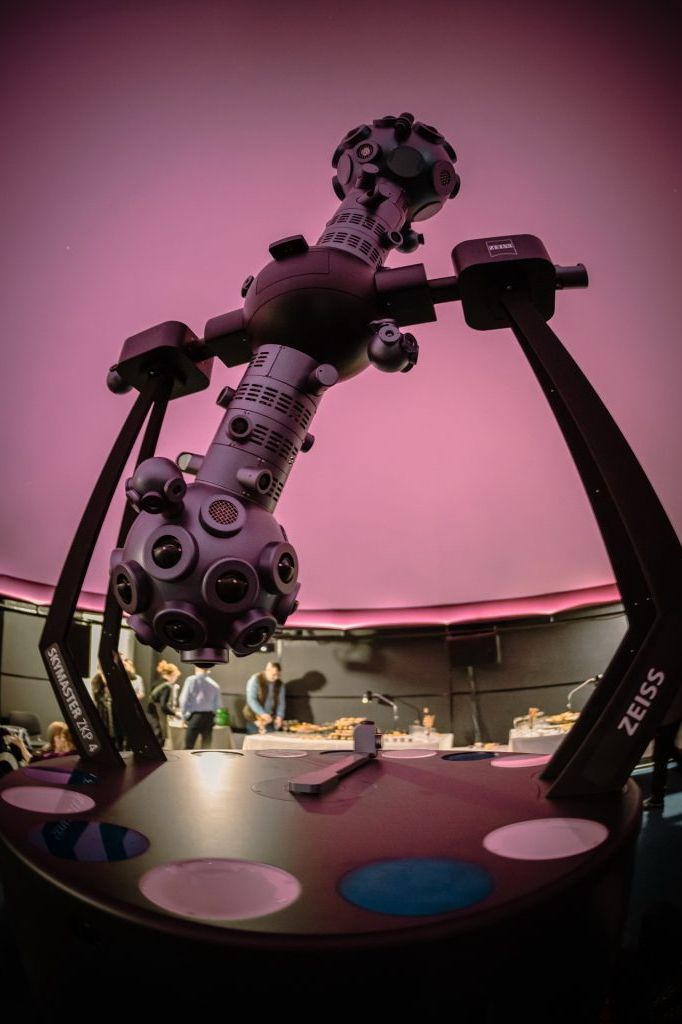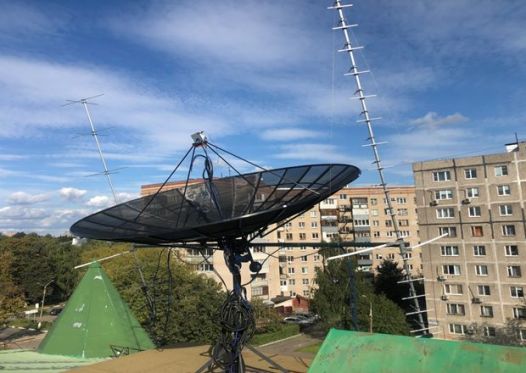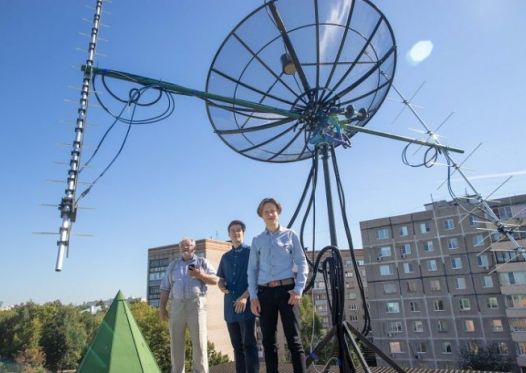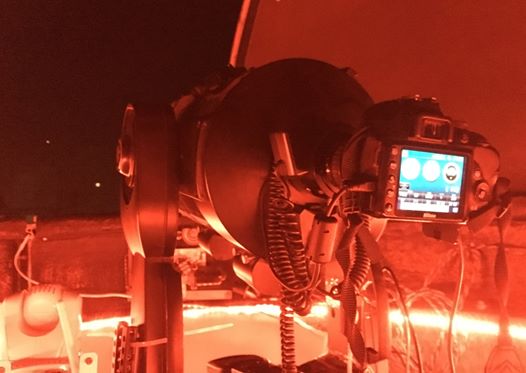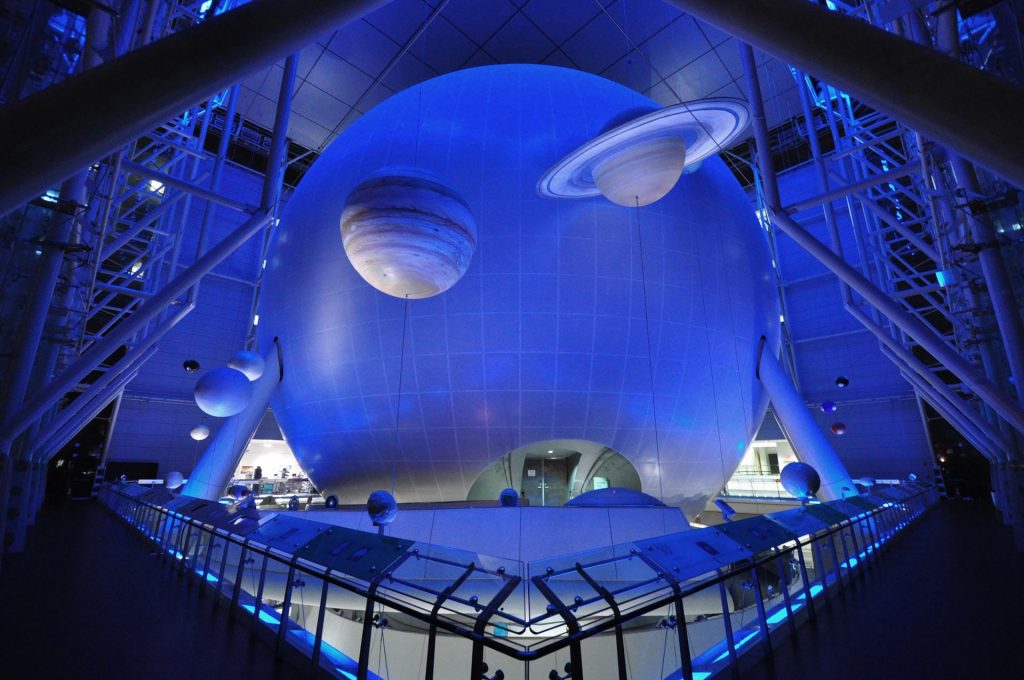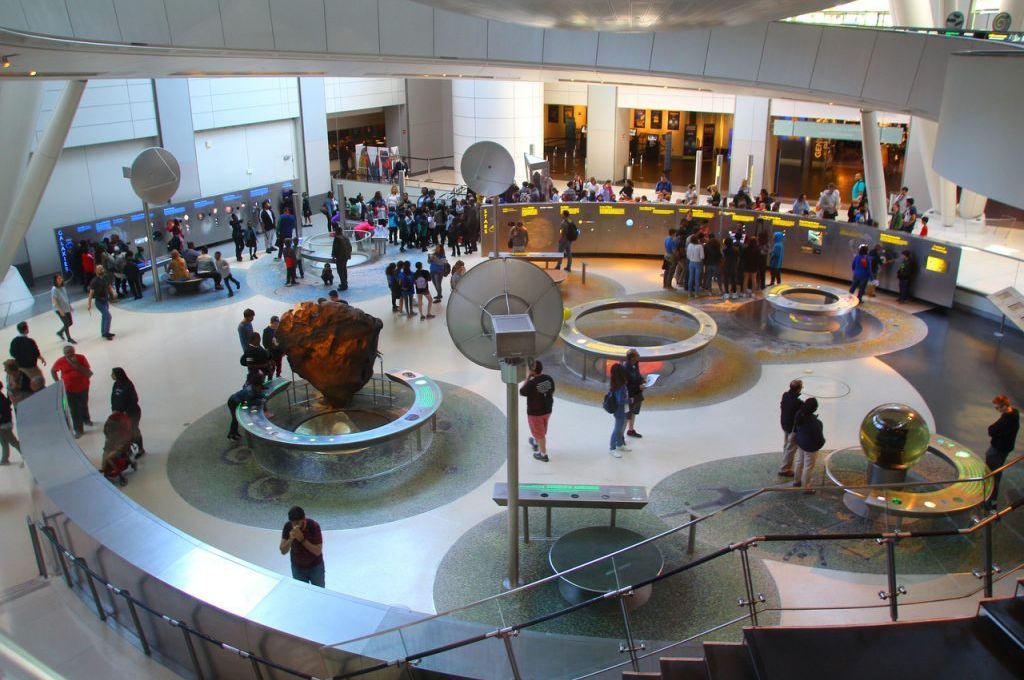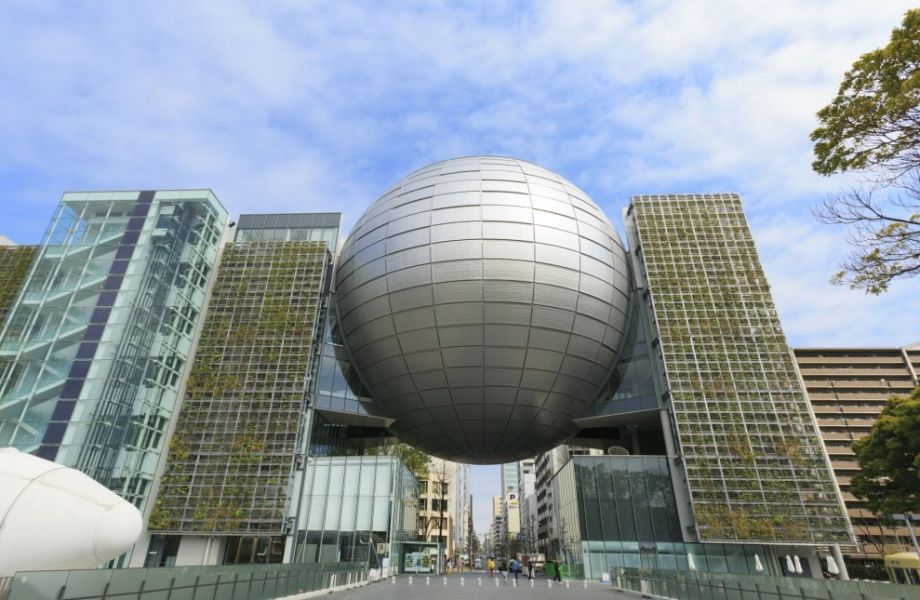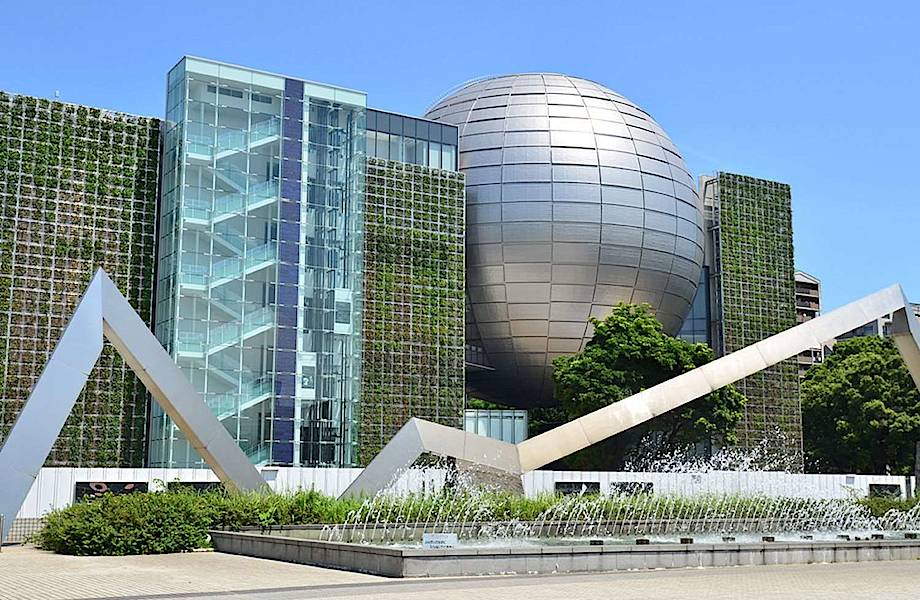School planetariums and observatories are often considered a luxury, but sometimes expensive equipment is not used to its full potential. So how can planetariums be turned into a multifunctional tool for teaching different disciplines, while still being a point of attraction for the entire urban community? We tried to figure it out. And in the end of the story we share four of the most striking examples in the world of practice.
We seldom think about how many things in our lives are connected to space. In terms of the number of discoveries in science, astrophysics is now one of the most advanced scientific fields. School planetariums are not an end in itself but a versatile tool, another school resource that’s handy for visualizing curricula. In addition to astronomy, enthusiastic educators can give lessons in geography, physics, chemistry, history, and literature in school planetariums. The Planetarium in Moscow has, for example, a program devoted to the works of J.R.R. Tolkien.
A planetarium can help fascinate children of all ages. Experts believe that one can start at the age of four, but the perfect “active astronomical” age is 5th-6th school grade. The equipment in the planetarium may be modest, but the qualifications of the instructor (or guest lecturers) and the quality of the films must be the best.

Photo: School №19
How the planetarium works
The planetarium consists of a spherical dome impervious to light and precipitation and a system that projects a moving or stationary image onto its inner surface.
The projection system of large planetariums usually consists of several projectors, flat images from which are converted by a special program into a single spherical image (viewers sit in a circle). A low-cost alternative is one projector that sends the beam to the dome through a mirrored hemisphere or a quarter sphere (the audience sits with their backs to the projector).
The planetarium’s dome must have a minimum diameter of 5 meters.
It can be made of different materials coated with a reflective layer – polymer, plastered concrete, or plasterboard. There is also the option of two “airtight” layers of fabric with a vacuum between them. The structure rests on a metal frame or is supported by a blower. It can be mobile (fabric) or stationary (metal). The mobile version accommodates up to 25 people and is assembled within 30–40 minutes. It can be installed in the auditorium, gymnasium, or outdoors.
Films, commercials, and slides can be projected into the dome. One can also use special programs (one of the most common is Stellarium, developed by the French programmer Fabien Chéreau) to set up space experiments and create scenarios, such as speeding up and slowing down time, moving through time, and studying important astronomical dates, virtually travelling to a celestial body and making observations from it.
“Soil” for the planetarium: conditions that matter
The planetarium is a special, non-mandatory structure in a school. Therefore, its emergence and successful existence require the consent of the school’s principal; if they are a passionate person, the planetarium will be organized top down. But without an enthusiastic educator who is systematically engaged in the development, the planetarium will remain an expensive pile of equipment.
But it’s not enough to be an enthusiast. The main task of an educator is to become a coordinator and an attractor of specialists in different fields related to astronomy, who will become consultants (for example, in case of equipment failure) and mentors if it is necessary to give an in-depth lecture to students on a particular astronomical topic. There is no problem finding technical staff – computer specialists – to work in the planetarium, but there is a problem with teachers.
How much does it cost and how to choose the right one
The simplest version of a school planetarium can be built for around $3,000. This amount covers a small (5–6 meters in diameter) mobile vacuum dome, a projector, and a hemispherical mirror reflector.
A design of a higher quality – a similar dome, but with a more expensive laser projector and a “fish-eye” lens to project onto the sphere, will cost around $17,000.
And finally, the highest level – a planetarium with a “capital” dome and an optical-mechanical projector. The biggest expense will be the purchase of a Ziess, a unique optical-mechanical device to demonstrate the starry sky. The remaining will be spent on the dome, a projection system for demonstrating films, consisting of eight projectors and a server with software, as well as consumables – primarily the special lamps. A set of lamps lasts for about two years.
To make the right choice of such dedicated equipment as that of a planetarium, one needs to complete special training. If a teacher does not have the capability to delve deeply into the intricacies of engineering, one can resort to outside counselling.
![]()
“When building a planetarium, it is important to choose equipment that is as durable as possible. I know planetariums that have upgraded their equipment, and the quality of the picture has deteriorated. My opinion: you have to be a trendsetter,” astronomer Dmitry Semyonov explains.
He has experience with major manufacturers of projection systems, including Carl Zeiss in Germany, Barco in Belgium, and the French software developer RSA Cosmos.
Astronomy, physics, environmental studies, life safety, geography, and chemistry classes may be attended not only by local students but also by students from other schools in the city. On weekends, Planetarium might be open for commercial science-and-music programs.
“Sidewalk” astronomy is also a great outreach tool [telescope being mounted outdoors – EdDesign Mag].
Working with a telescope outdoors also involves informal socializing, in which parents gladly participate together with children.
Ziess. Photo: School №19
“Even in the city with its lights, you can see the Moon and Saturn with its rings. It is very impressive for an unsophisticated mind to see a planet from which light travels 1.5 billion kilometres in less than an hour. We try to get the kids to come with their parents so that they have something to discuss afterwards. This improves understanding because the children feel supported in the family“, says astronomer, Dmitry Semyonov, Head of the Planetarium Unit at Irkutsk Schools.
Podolsk: School flight control centre and satellite launch
In 2001, physics teacher and former businessman Igor Tsarkov began to explore the Podolsk School grounds allocated for astronomy. He bought a domestic telescope Tal-150 with him and spent his evenings exploring the sky with schoolchildren right from the roof of the school.
Over the years, the school built a 6-meter planetarium dome and a small observatory with sponsorship money. The Tal-150 telescope was replaced by the automated American Meade LX90. With its help, it is possible to automate the process of preparation for observations – to set the research program, and the order of viewing objects, to save time and effort on readjustment of the device. Now, the observatory and the telescope itself can be controlled remotely.
“In the night you sit with a cup of tea at the computer screen and look at the starry sky. I recently drew up a paper where I explored all of the Earth’s cosmic doom options. The Andromeda Galaxy and our own Milky Way are moving toward each other and will collide in 2 billion years. This is one of the eight 100% space threats to the Earth,” says Alexei Yazynin, a member of the Scientific School Society at Podolsk School.
![]()
Five years ago, schoolchildren suggested Igor Tsarkov radically solve the problem of cloudy weather, which interferes with observations. It was decided to build and launch their own satellite with a telescope to observe the skies 365/24. For starters, Tsarkov found professionals who know how to launch satellites.
For the next two years, the school project was managed by Alexander Shaenko, an associate professor at the Bauman Moscow State Technical University and a space technology developer, who by that time had already launched the Mayak satellite.
Photo: Igor Tsarkov
A flight control centre was built in a small space next to the planetarium. Three satellite dishes mounted on the roof receive signals from the satellites and transmit them for processing to a system consisting of several computers and a dedicated server.
“We are now receiving telemetry from 13 satellites. Their owners do not have the equipment to receive data. You have to pay commercial companies for this service. And we do it for free,” says Igor Tsarkov.
In parallel with the creation of FCC, students learned to work on CNC laser machines (available in the school technology classroom) and made wooden models of parts of the future satellite. They then learned how to make printed circuit boards. The equipment for their manufacture was given to the school after being written off from a neighbouring enterprise. To program the satellite’s telescope to operate in orbit, it was important to learn how to operate it with precision.
“You can’t fix anything in the telescope once it has been launched. You have to learn on the ground how to point and turn the device in space,” explains Igor Tsarkov.
A year ago, the school won a grant from the Foundation for Assistance to Innovations and purchased a “billet” – a system of blocks for a CubeSat 3U satellite with an onboard computer and orientation stabilization system. Under the guidance of experts, students made a drawing of the telescope. It was manufactured by one of the specialized companies.
Then Alexander Shaenko’s partner in the Mayak project, head of Stratonautika Denis Efremov, took over the management of the project. Under his leadership, schoolchildren conducted stratospheric tests of the satellite’s engineering model in the Vladimir region. Five satellites were suspended on a helium-filled balloon and launched. It ascended to an altitude of 30 km. During the ascent, they checked the operation of the telescope and data transmission program. Then the balloon exploded and the satellites parachuted down to earth. They were found by a specialised search team (deviation of about 100 km) using GPS beacons.
Now, the team is busy with preparation for the launch of the satellite. It is planned for the end of June 2023 from the Vostochny Cosmodrome. The costs of the launch will be borne by the Roscosmos Corporation.
“Astronomical” considerations at school: what to keep in mind
- The operation of a school planetarium requires special staff positions. Not every physics teacher would take on such an extra workload. One common option is to create a subdivision of additional education within a school.
- The number of specialists capable of using a planetarium at full capacity and keeping the equipment in proper condition is important.
- School planetariums need professional educational films that are made in full-dome format. When choosing material, it is important to rely on the opinion of expert astronomers. Another solution is to produce content in school, creating content for the dome screen might be a part of the project-based learning.
- School generations change fast, and the complex skills needed to work in the planetarium, observatory, or satellite club are slow to learn.
- For students, working in a planetarium or observatory is a learning process, not a job.
It’s not a problem to build a planetarium today. But, just a dome with a sign is not a planetarium. One should carefully choose where to plant astronomy.
